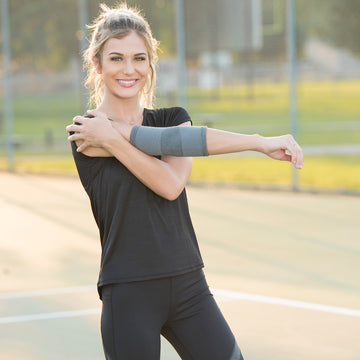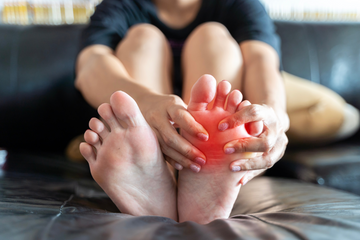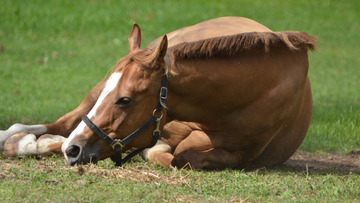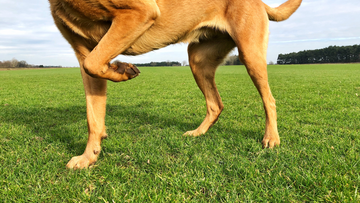Bucked Shin is a periostitis which is an (inflammation of the membrane enveloping a bone) of the front surface of the cannon bone. It is common in the foreleg, but rare in the hind legs. It refers to tiny stress fractures in the front of the cannon bones. Bucked Shins occur frequently in young thoroughbreds during the first weeks of training. Bucked Shins occur when stress is put on the legs by training at high speeds exceeds the bones ability to adapt to that stress.
Horses who run on turf rarely develop this problem, but horses who run on hard surfaces are likely to do so. As the foot strikes the ground, the front surface of the cannon experiences greater compression than the back. The causes of periosteum on the front surface of the cannon to buckle and tear. At the same time, the bone can develop cracks and fissures called stress fractures.
Symptoms of Bucked Shins: 
- Painful lower leg
- Warm lump on shin
- Favoring one leg over the others
- Lameness
- Inability to exercise
- Not performing as usual
The key to Bucked Shins is to prevent them in the first place by making sure your two-year old’s are not exercised past their limits. X rays should be taken to identify the injury and look for stress fractures. The treatment depends on how serious the condition is and how well your horse is able to walk. The first and most important part of treatment is to redesign the way your horse is worked and trained to let the bones form correctly in order while allowing the new bone to heal. The rest period associated with this type of treatment plays an important part. Complete stall rest is also not recommended because exercise is part of the healing process, and too much rest will allow the new bone growth to be reabsorbed, negating the positive effect of the stress.
Relieve acute inflammation and swelling with:
- Ice Packs
- Pressure Bandages
- Phenylbutazone (Butazolidin)
As a result to assist your horse in healing Bucked Shins, Benefab offers the
Therapeutic Smart QuickWraps. The fabric emits far-infrared rays keeping leg muscles, tendons, and ligaments warm and relaxed. It features 11-14 magnets depending on which leg targeting major tendons, ligaments, and joints by pulling the blood to these areas. Contoured fit will eliminate shifting, sliding down and/or rotating. Contoured shape for comfort with a perforated foam inner core and strong securing straps made from durable elastic. Can be used as a QuickWrap or with inner section as standing bandage. The QuickWraps harmonize bodily functions
safely and naturally, stimulating recovery time, promoting blood circulation, increasing oxygen flow, and ultimately reducing pain and stiffness.






















